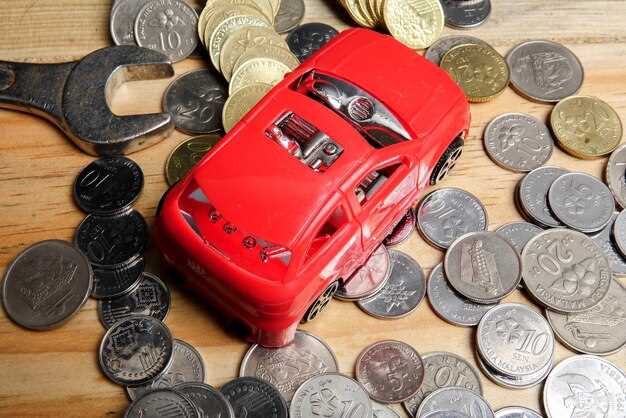
The classic car market has seen a resurgence in interest over the past few years, driven by a new generation of enthusiasts eager to invest in vintage vehicles. Understanding the trends shaping this market is vital for anyone looking to make informed decisions about purchasing classic cars. These vehicles are not just relics of the past; they represent a unique blend of history, craftsmanship, and culture, which continues to captivate collectors and investors alike.
As we delve into predicting future prices of classic cars, it is essential to examine various factors influencing their value. Economic conditions, popularity of certain makes and models, and emerging trends in the automotive industry all play pivotal roles in determining the future landscape of classic car pricing. By analyzing historical data and current market behavior, we can gain insights into which vehicles are likely to appreciate over time and which models may remain stagnant or decline in value.
Moreover, as the market evolves, the characteristics that define a desirable classic car are continually shifting. Attributes such as rarity, provenance, and overall condition will always be significant, but today’s buyers also consider technological advancements and environmental implications. This article will explore not only the established metrics for valuation but also the emerging trends that may influence the desirability and pricing of these timeless vehicles in the years to come.
Analyzing Historical Market Trends for Classic Vehicles

Understanding the historical market trends for classic vehicles is essential for predicting future prices. The classic car market has experienced significant fluctuations over the years, influenced by various factors such as economic conditions, collector demand, and cultural shifts. Analyzing these trends allows enthusiasts and investors to make informed decisions.
Over the past few decades, certain classic cars have seen their prices soar, reflecting their rarity and desirability. Models from iconic manufacturers like Ferrari, Porsche, and Ford often command premium prices at auctions. The demand for classic vehicles tends to increase during prosperous economic periods, as collectors and investors seek tangible assets. Conversely, during economic downturns, prices may stabilize or decline as discretionary spending decreases.
Additionally, regional variations play a crucial role in price dynamics. Certain classic cars are more sought after in specific markets, with local preferences significantly influencing their values. For instance, vintage American muscle cars may be more valuable in the United States, while European classics are often favored in European markets. This geographical disparity can provide insights into future pricing trends as collectors expand their interests globally.
Technological advancements have also impacted the classic car market. The rise of online auction platforms and classic car trading websites has made it easier for buyers and sellers to connect, enhancing the visibility of certain models and driving prices higher. Furthermore, the growing interest in sustainable practices has led to a rising demand for electric conversions of classic vehicles, which may shape future trends in pricing and desirability.
In conclusion, analyzing historical market trends for classic vehicles reveals a complex landscape influenced by economic factors, collector preferences, regional dynamics, and technological advancements. Understanding these elements is vital for anticipating future price movements in the classic car market.
Factors Influencing Classic Car Price Valuation

Classic cars have become more than just vehicles; they are coveted assets that reflect personal taste and investment opportunities. The price valuation of classic cars is influenced by several critical factors, which have evolved over time. Understanding these elements can provide potential buyers and collectors with insights into market trends and help make informed decisions.
Condition and Restoration: One of the primary factors affecting the price of classic cars is their overall condition. Vehicles that have been meticulously maintained or restored often command higher prices. The quality of restoration plays a crucial role, as professional restorations using original parts can significantly enhance value. Conversely, cars with poor condition or incomplete restoration may see a decrease in price.
Rarity and Demand: Rarity is another significant aspect. Limited production models or unique configurations tend to attract collectors, driving up prices. Additionally, market demand plays a pivotal role; cars that are currently in vogue or that have gained popularity through various media can experience price surges. Trends can shift rapidly, so staying informed is essential for potential investors.
Provenance: The history of a classic car, including previous ownership and any notable events it may have participated in, can greatly affect its value. Documentation proving authenticity and a well-documented history can elevate a car’s status in the eyes of collectors, enhancing its price. Cars with celebrity ownership or significant historical importance often achieve premium valuations.
Market Trends: The classic car market is subject to fluctuations like any other investment sphere. Economic conditions, enthusiast trends, and even technological advancements can impact values. For instance, the growing interest in eco-friendly vehicles has led to some classic models being re-evaluated. Keeping an eye on market trends helps predict future price movements and aids in strategic acquisitions.
Model and Features: Specific models tend to hold their value better than others. Factors such as engine type, design features, and even color can influence desirability and, consequently, pricing. Iconic models with distinctive features often remain evergreen in terms of their collectible status, reinforcing their market position.
In conclusion, understanding the various factors influencing classic car price valuation can empower collectors and investors to navigate the market effectively. By taking into account the condition, rarity, provenance, market trends, and specific model features, individuals can better assess potential investments in the classic car space.
Utilizing Data Analytics for Price Forecasting in Classic Cars
In the realm of classic cars, understanding market dynamics is crucial for enthusiasts and investors alike. Data analytics plays a pivotal role in predicting future prices, allowing stakeholders to make informed decisions. By leveraging historical sales data, current market trends, and various economic indicators, analysts can derive insights that inform price forecasting.
Firstly, historical price trends provide a foundational basis for prediction. Analyzing past sales records, one can identify patterns in appreciation, depreciation, and fluctuating demand for specific models. Certain classic cars have shown a tendency to appreciate in value, particularly when linked to notable events or significant milestones in automotive history. Data analytics helps in understanding how these trends may evolve over time.
Moreover, regional demand influences the price trajectory of classic cars. Utilizing geographic data can help identify which models are more popular in certain areas, driving demand and consequently impacting prices. For example, classic muscle cars might fetch higher prices in a region where car culture is deeply rooted in automotive history. Thus, incorporating location-based data into analytics enhances the accuracy of price predictions.
Another significant aspect is the consideration of economic factors such as inflation and disposable income trends. By analyzing macroeconomic data, forecasts can be adjusted to account for the purchasing power of potential buyers. This economic context provides deeper insights into how external factors could either bolster or hinder the appreciation of classic car prices.
Additionally, trends in the collector community, including the diversity of buyer demographics and emerging interests in electric classic cars, also affect valuations. Data analytics can track social media mentions, auction results, and collector forums to identify shifts in buyer preferences. Recognizing these trends aids in crafting more precise forecasting models.
In conclusion, data analytics serves as a powerful tool for predicting prices in the classic car market. By synthesizing historical data, understanding regional demand, incorporating economic indicators, and monitoring collector trends, analysts can generate forecasts that provide invaluable insights. This approach not only benefits investors but also enriches the overall appreciation of classic automobiles within the community.

